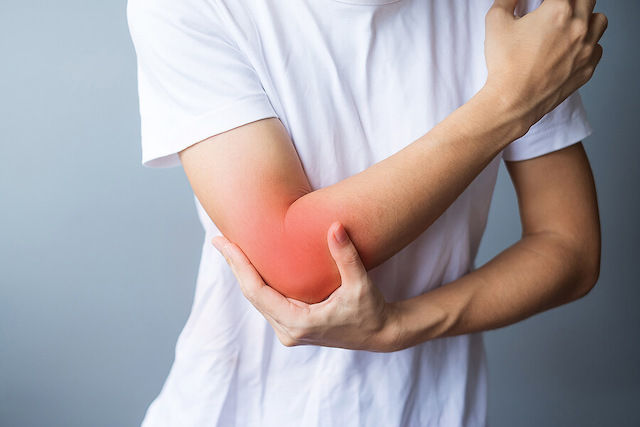Tennis Elbow Risk Factors: Are You Susceptible To It?
- Affinity_Editor
- Apr 20, 2022
- 3 min read
Updated: Apr 25, 2022

The term “tennis elbow” refers to a painful elbow disorder. Its technical name is “lateral epicondylitis”, and it describes pain in the outer part of the elbow joint, usually due to inflammation of the corresponding elbow tendons.
There are several ways tennis elbow may develop, and some people are at higher risk of developing the condition compared to the others. For example, if you are an athlete or a worker engaged in the heavy use of repetitive hand or arm motions, there is a higher chance that you will develop tennis elbow in the long run.
In order to understand this condition better, we explain how this problem arises and some of the possible risk factors associated.
How Tennis Elbow develops
Development of tennis elbow is often attributed to the recurrent contraction of the forearm muscles. There are two sets of muscles controlling the movement of your hands and wrists. They are attached via tendons to two small points of bone located just above your elbow. Lateral epicondylitis affects the set of muscles involved in opening the hands or extending the wrist. The opposing set of muscles (which close the hand and flexes the wrist) are much stronger.
Extension of the fingers or wrist against resistance may cause strain or tears at the tendon origin. Over usage of the muscles may affect the tendons where these strong forces can eventually tear your tendons’ fibers and cause an injury called a “strain”. Over time, strained tendons can become bumpy, thickened, weakened and in worst cases, torn.
Major risk factors for Tennis Elbow
Tennis elbow is common in athletes and workers whose jobs require repeated or forceful movements of the fingers, forearms, and wrists. The condition can develop due to excessive force at once or small amounts of force exerted for an extremely long period of time.
Because certain movements are associated with the development of tennis elbow, you may be at higher risk of developing the condition, especially if you have the following risk factors:
Age
Research has shown that people who are 30 years old and above have a higher risk of developing tennis elbow. Nonetheless, while it is most common in adults between 30 and 50, tennis elbow may affect people of all ages.
Skipping warm-ups
Your muscles are less susceptible to tearing when you stretch and do proper warm-ups before participating in physically demanding activities or intense sports. On the contrary, failing to stretch and warm up can increase your risk of damaging your tissues, which can result in tennis elbow.
Improper use of sports equipment
As mentioned earlier, athletes are more prone to tennis elbow than ordinary people. This is especially true for those who do not use their sports equipment properly. An example of this is the use of a tennis racket that is too big or too heavy for the individual. A racket that is not strung properly can also cause straining.
Poor athletic posture
Aside from the proper use of sports equipment, good athletic posture is crucial in preventing the development of tennis elbow. An example of a poor athletic posture is when a tennis player uses a hitting force that is mostly supported by the elbow instead of their core abdominal muscles.
Engaging in physically repetitive activities or occupations
Even if you are not an athlete, you can still develop tennis elbow if you engage in physical activities or occupations that require the constant use of your arms and wrists. This includes paddling or rowing a boat, casting lines while fishing, and overhand throwing of heavy objects like balls.
Conclusion
There are various risk factors associated with tennis elbow. However, the development of this painful condition is generally related to the way you carry out certain activities, such as moving, reaching, twisting, and gripping. These activities or movements can become particularly risky when they are done improperly and excessively. To avoid developing tennis elbow, you should always try to be mindful of your activities and be sure to take a rest from time to time!
If you currently suffer from tennis elbow and the pain you experience is already affecting your day-to-day life, you should seek professional help. At Affinity Pain Clinic, our experienced and expert pain specialists can provide you with a comprehensive tennis elbow treatment in Singapore. We are dedicated to providing top notch treatment at cost effective prices. Well equipped with the knowledge of the science behind pain and its treatments, we pride ourselves in always putting our patients first.
To book an appointment or for further enquiries, feel free to drop us an email at enquire@gastapp.org anytime.

Comments